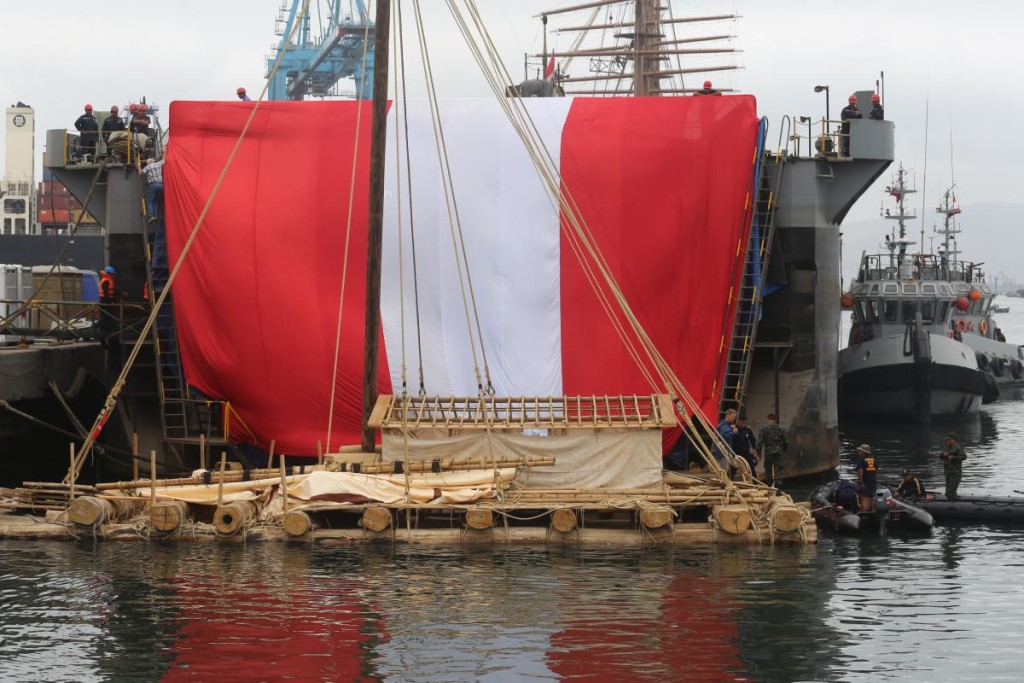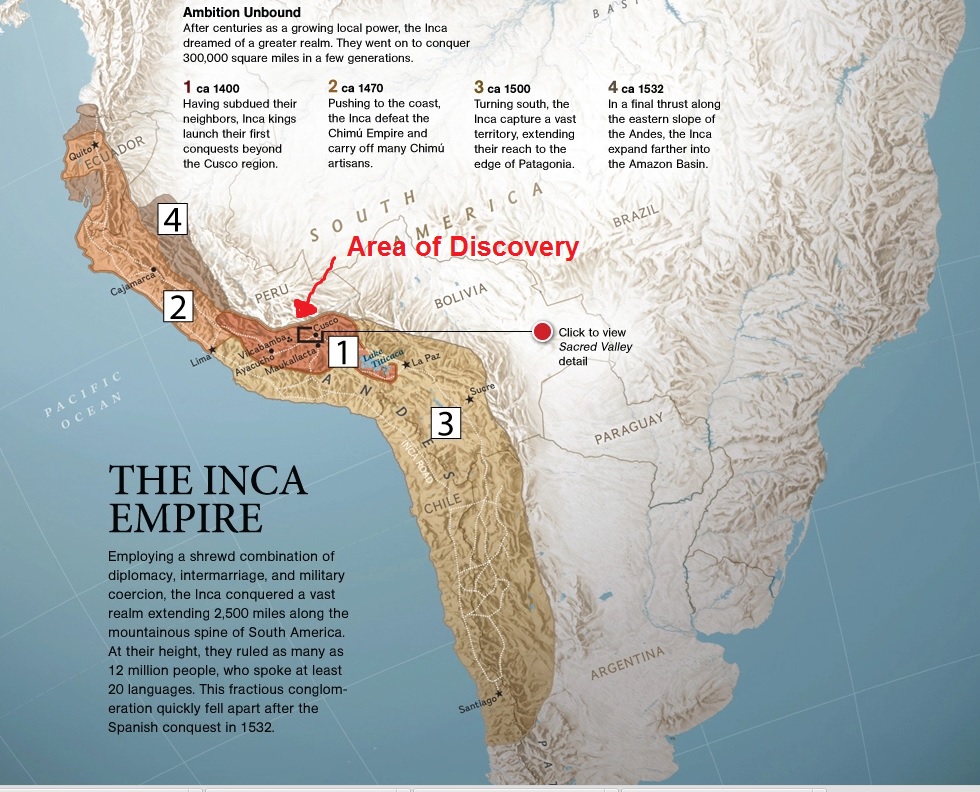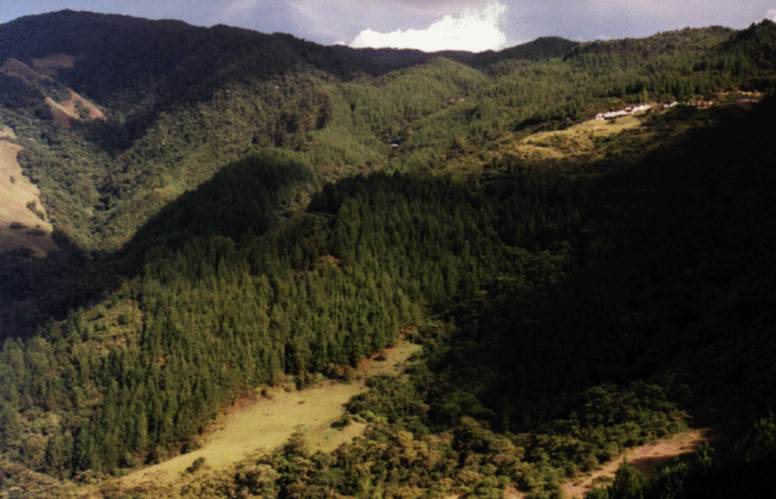
The Kon Tiki 2 prepares for its maiden voyage in the port of Callao (Lima), Peru
Kon-Tiki Expedition Raft Trip Revived with Trip to Easter Island
Oct 29, 2015
El Comercio
(Translated by Kim MacQuarrie)
(Note: I met Thor Heyerdahl in 1988 up in Tucume, in northern Peru, as he was excavating among the Moche pyramids. I spent about three days helping him to clear the site and he was a very gracious host. One of the chapters in my forthcoming book, Life and Death in the Andes, addresses Heyerdahl’s voyages and theories and also chronicles my search for the reed boat builder who built Heyerdahl’s rafts for his Ra Expeditions. I found him still alive and well, 82-years-old, and living in a village alongside Lake Titicaca. I also investigate whether Heyerdahl’s migration theories were ever substantiated. Much has been learned since his 1947 raft trip from Peru to the Marquesas Islands).
Enthusiasm reigns among the members of the Kon Tiki II, an expedition consisting of two rafts bound for Easter Island from [the port of] Callao early next month. The crew of 14 hails from Peru, Norway, New Zealand, England, Russia, Chile and three other nations and emulates the modes of navigation used by the ancient Peruvians.
(more…)

Map of the Inca Empire and location of discovery
A team of Spanish explorers and scientists, using satellite imagery, discovered in mid-September a previously unknown Inca site some 150 miles north of Cusco. Using computer imaging software, the expedition reached a mountain top and discovered some 50 structures and an Incan cemetery complete with skeletal remains. In addition, near the summit, the team discovered structures that resemble those involved in human sacrifice, or capacocha, found elsewhere in the Andes. According to the team, it’s possible that the site was used by Incas after the initial conquest of the Inca Empire by Francisco Pizarro, during the period of nearly forty years when a rump empire of Inca guerrillas existed in the Vilcabamba area. In 1572, the Spaniards invaded Vilcabamba, captured the final Inca emperor, and beheaded him in the main square in Cusco.
(more…)

La Catedral Prison
From my travel journal: Medellín, Antioquia
I met Pablo Ochoa—not the Colombian drug king, but the name of my cab driver—sitting in the fifth cab in a long line of cabs in Envigado, a suburb of Medellin where Pablo Escobar grew up. I wanted to visit La Catedral, the prison Escobar had first built and then had spent a year and a half in, located about an hour up a green mountainside. The first driver shook his head and said he needed a larger cab. The second shook his head and said it was too far and that the road was narrow and bad. The third and fourth drivers said the same. Pablo—59 years old with gray hair and intense, dark eyes—looked me over suspiciously and nodded.
(more…)



